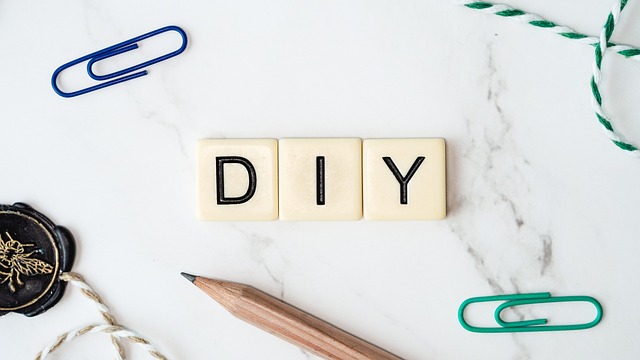It’s a fact that some projects can be messy, and you have likely cleaned up after a few particularly dirty ones yourself.
Tips For Containing the Mess During a DIY Project
1. Keeping the Workspace Clean During a DIY Project
There are numerous things you can do to make your home truly yours, from remodeling a room to adding a fresh coat of paint. You even have the option to build and design your own furniture, giving it a unique, handmade appearance.
When engaging in DIY projects, it is important to remember that while they can be satisfying, they can also create a lot of mess and disorder. By following a few straightforward suggestions, you can reduce the amount of cleaning up needed and enhance your enjoyment during your next DIY endeavor.
2. Clear Out Your Space
Before starting a DIY project, it is important to clear out your space in order to effectively contain the mess.
To minimize the risk of damaging or dirtying items and to reduce the amount of cleaning needed later on, you can create a clean and protected environment for your project by eliminating unnecessary furniture pieces, décor items, and fabric goods.
When you have an unobstructed area to work in, you can concentrate on your project without any concerns about accidentally staining nearby furniture or decorations with paint or sawdust. Additionally, it facilitates better mobility and provides easier access to tools and materials, thereby enhancing the efficiency of your work.
In order to prevent the spread of dust and debris to other areas of your home, it is important to clear out your space. By confining the mess to one designated area, you can streamline the cleaning process and avoid wasting time and effort on cleaning multiple rooms.
Before beginning the DIY project, it is important to clear out the space. This entails storing furniture and décor items in a secure location, using protective sheets to cover any remaining items, and creating a workspace that is clean and free of clutter. By taking this simple step, not only will your DIY experience be more enjoyable, but it will also facilitate a smoother cleanup process at the end.
3. Clean Up At the End of Each Day
When you are working on a DIY project that takes multiple days, it may feel demotivating to consider cleaning during your breaks from creating. Nevertheless, by properly cleaning the workspace at the end of each day, you can prevent the build-up of dirt, grime, and parts, which can negatively affect the overall environment.
A heavy-duty vacuum is an effective tool for cleaning up at the end of each day. It can swiftly eliminate sawdust and other messy particles, preventing the transfer of dirt between rooms and the spread of the mess. By vacuuming the workspace, you can keep the area clean and orderly, facilitating an easier continuation of your project the following day.
In order to maintain a clean workspace and easily locate necessary items when you continue your project, it is crucial to not only vacuum but also to organize tools, materials, and debris, and properly dispose of any waste that has accumulated during the day. Make sure to return tools to their assigned storage area and neatly arrange materials.
Creating a more pleasant and efficient work environment can be achieved by cleaning up at the end of each day. Additionally, this practice prevents the mess from spreading to other areas of your home, resulting in a less overwhelming cleanup process overall. Take a few minutes at the end of each day to tidy up your workspace and establish a foundation for success in the following days.
